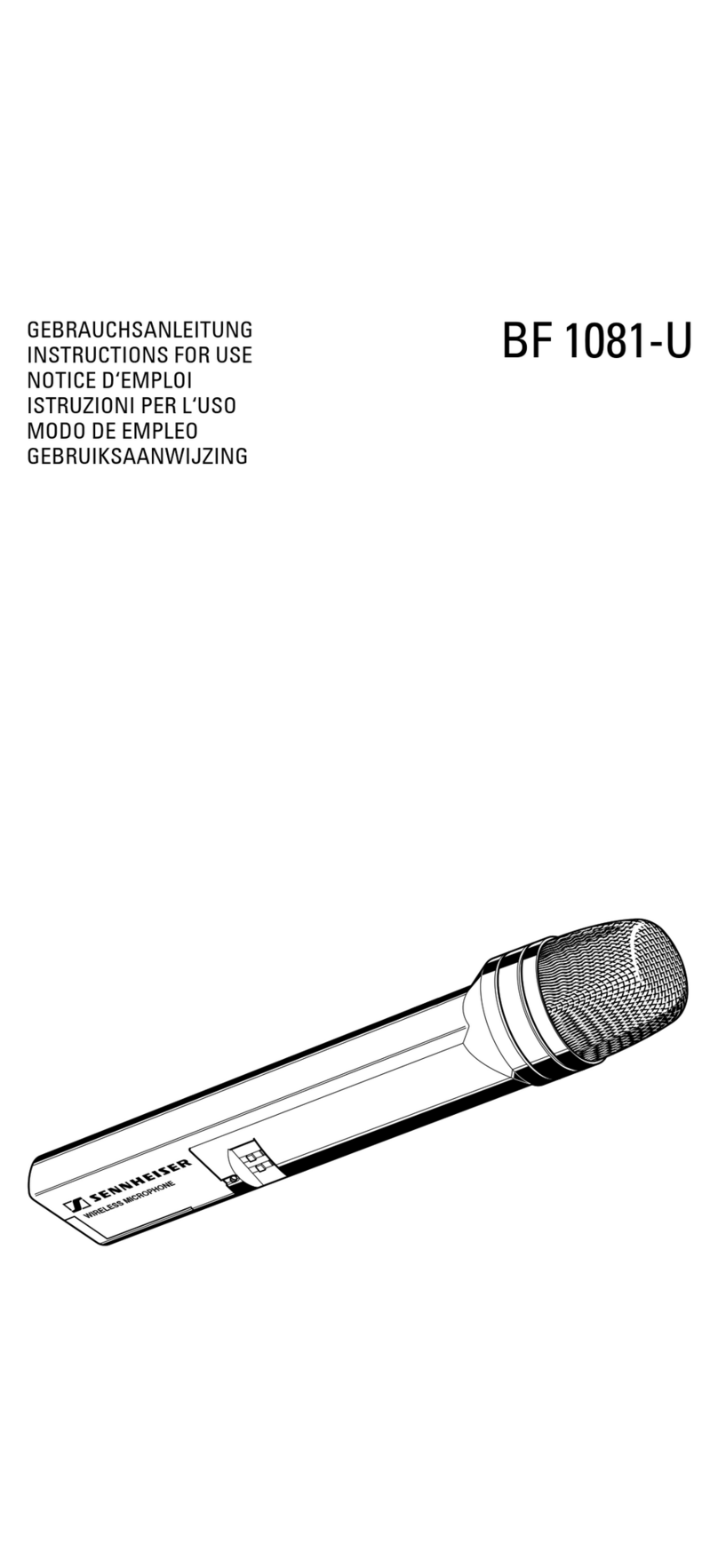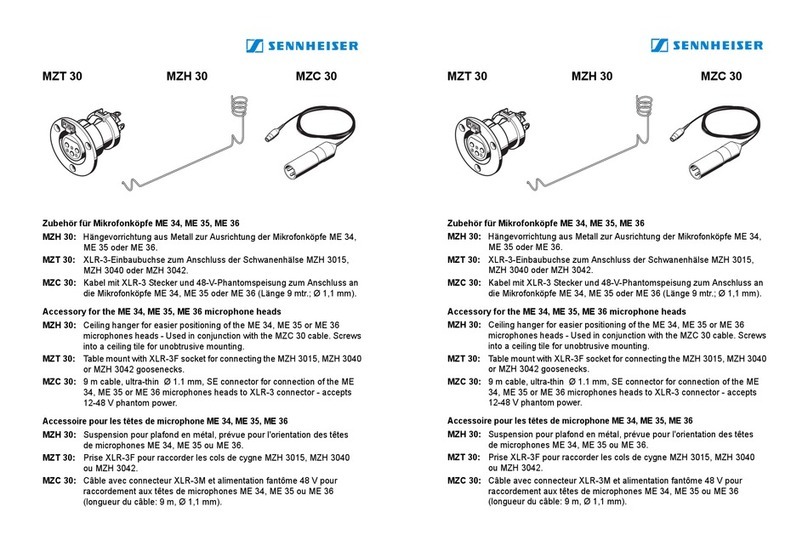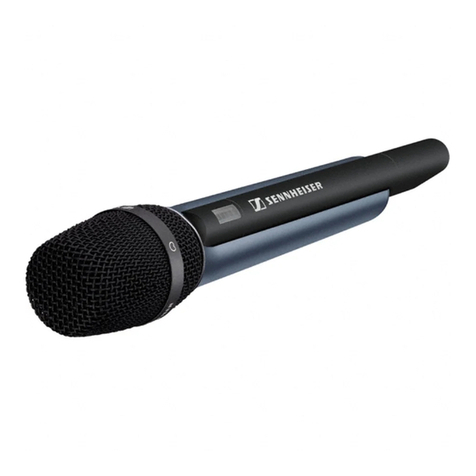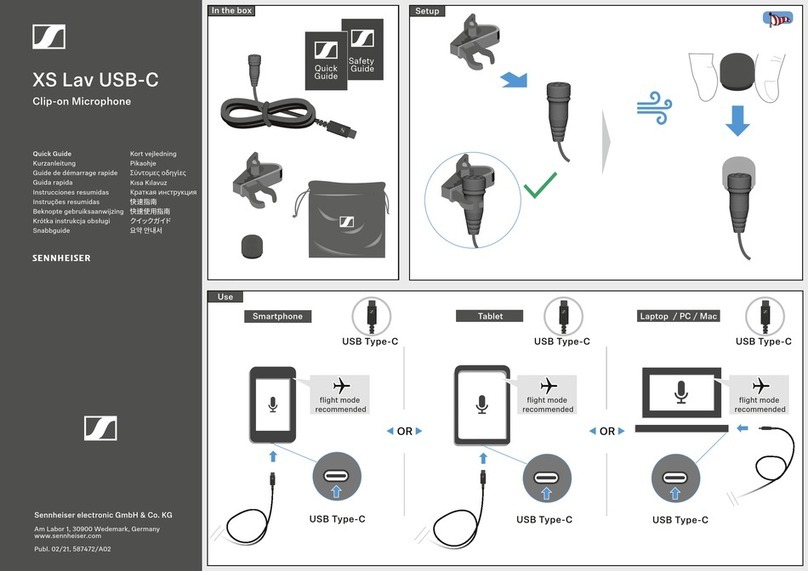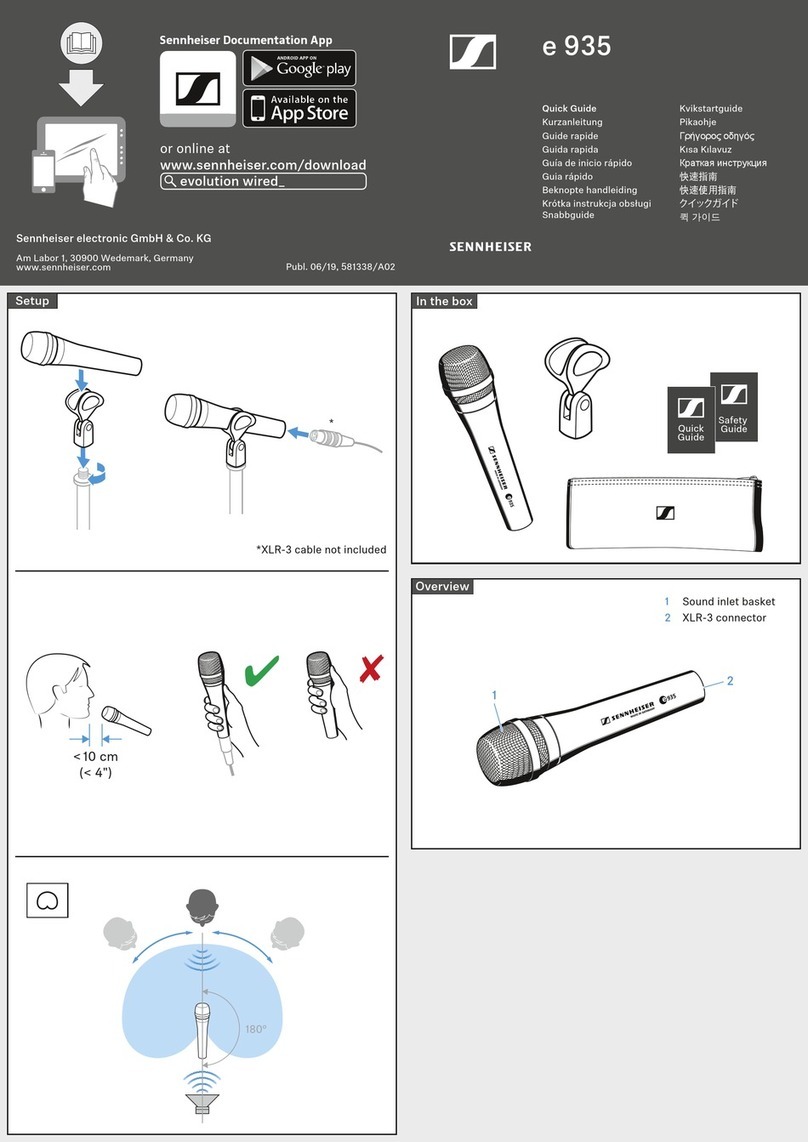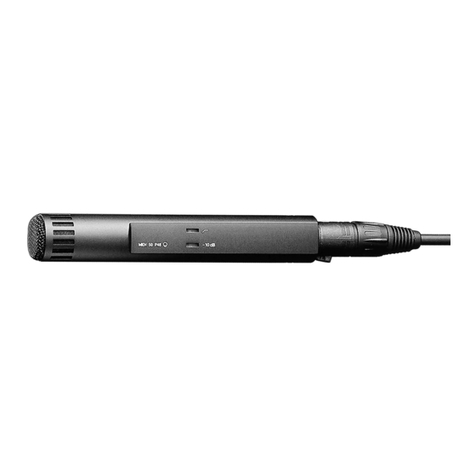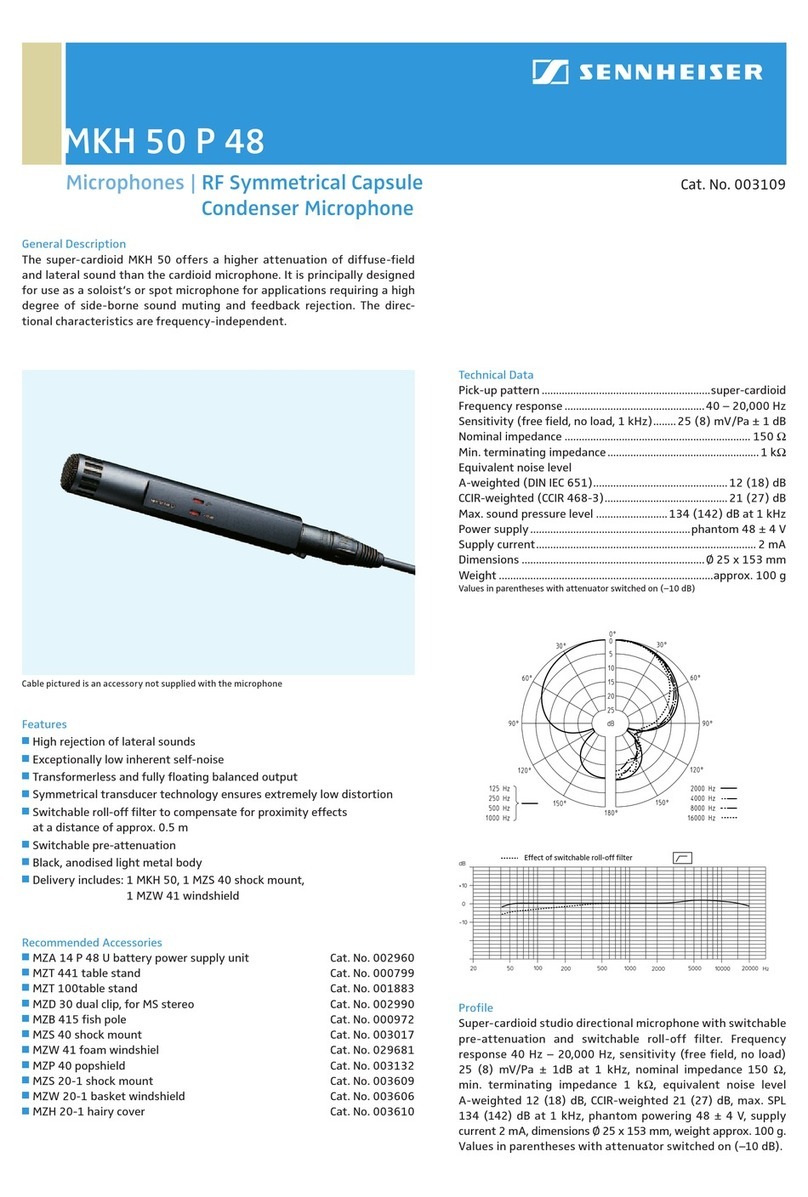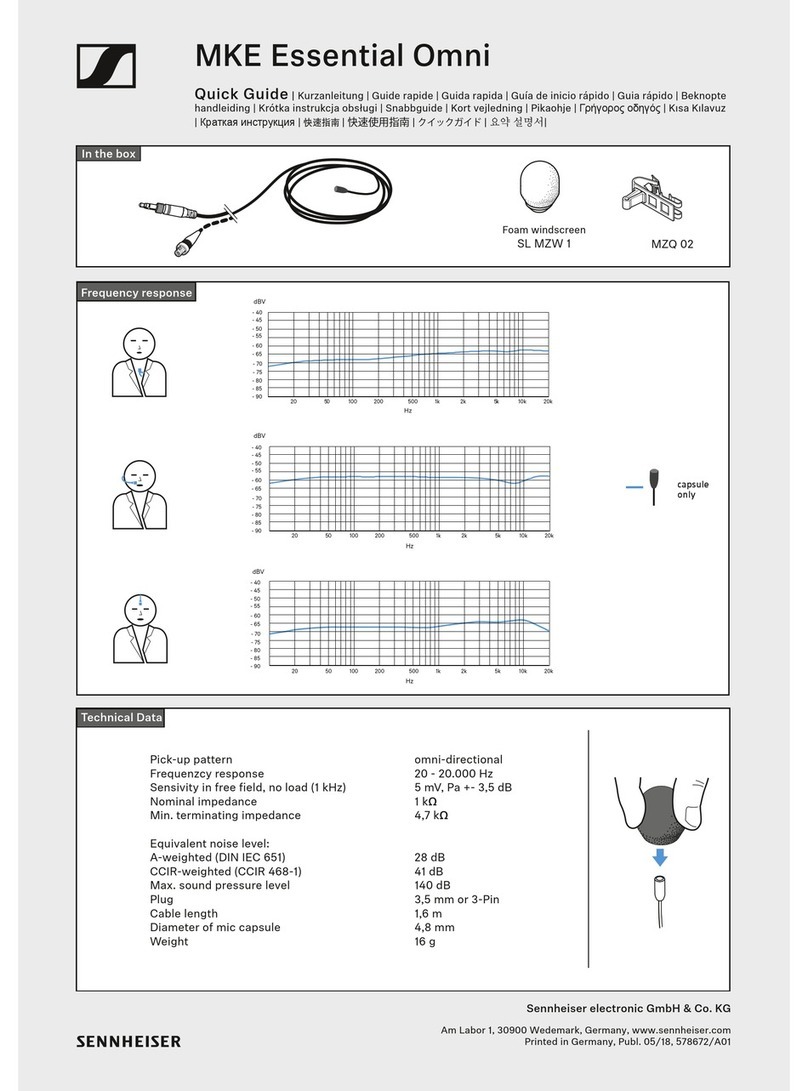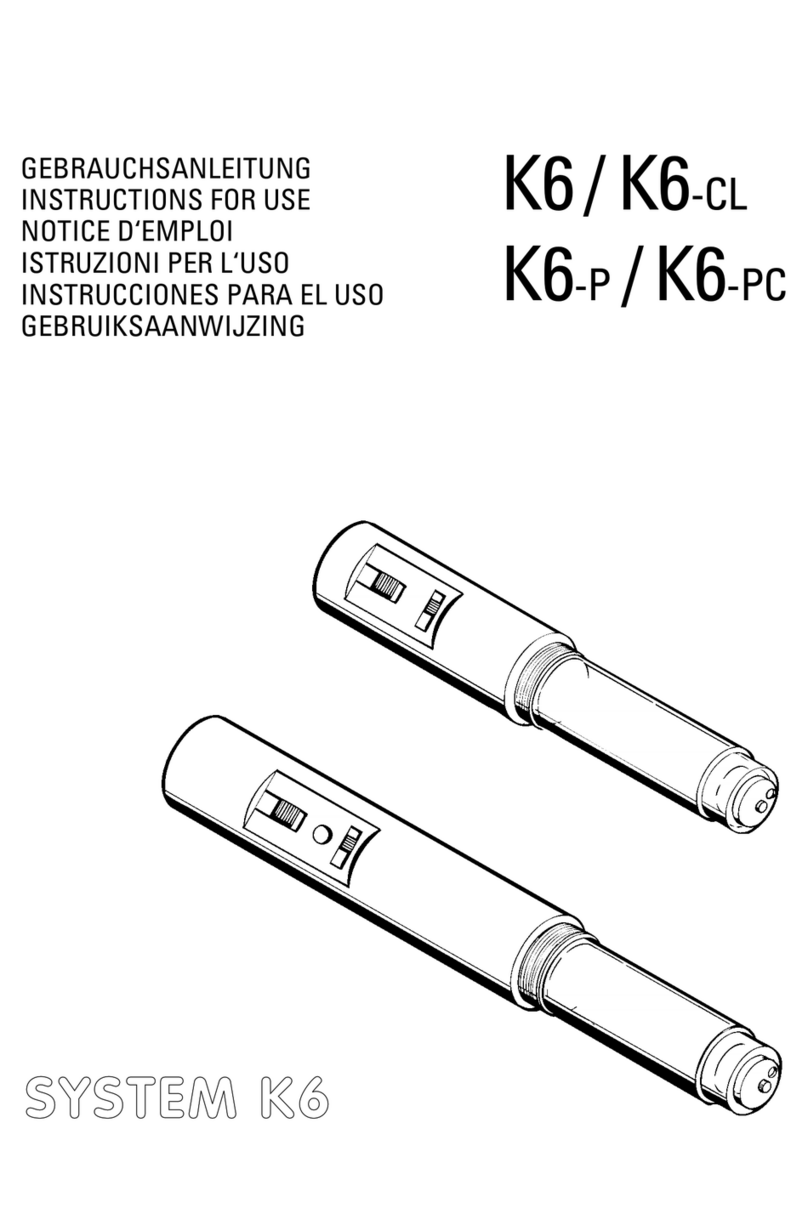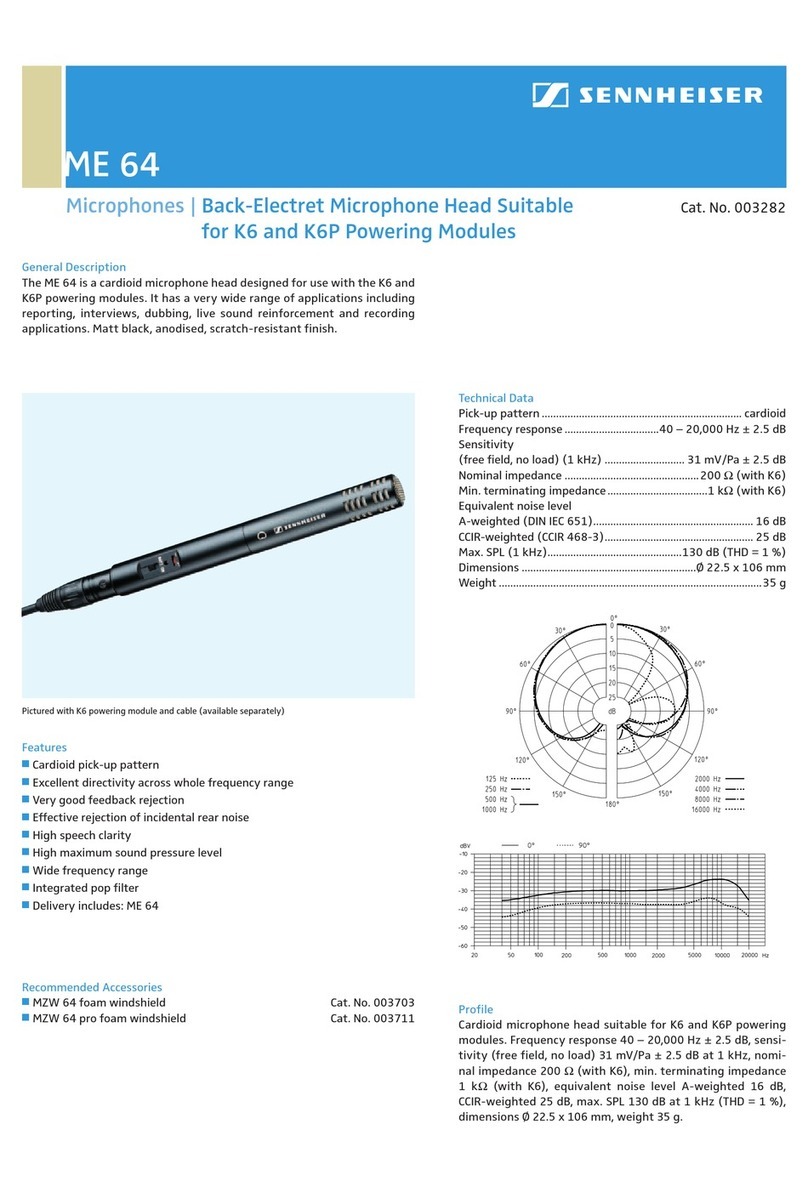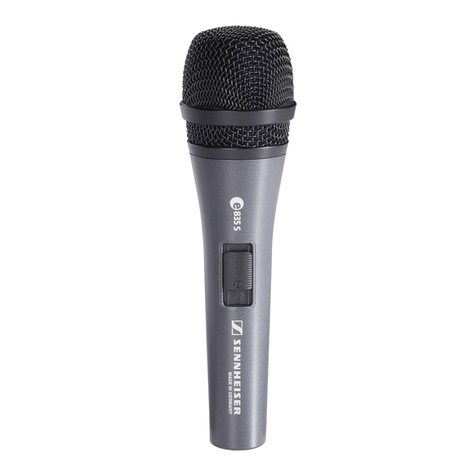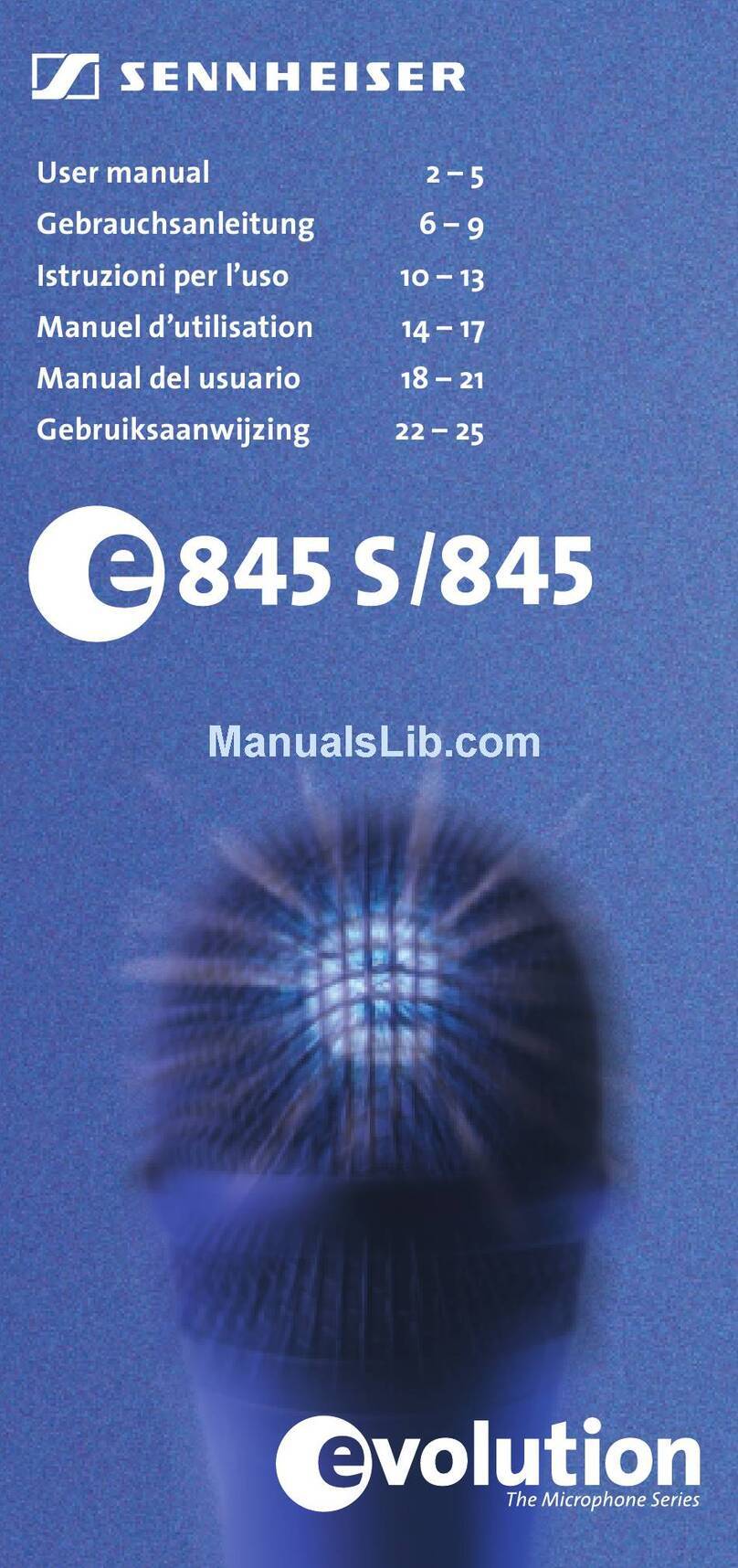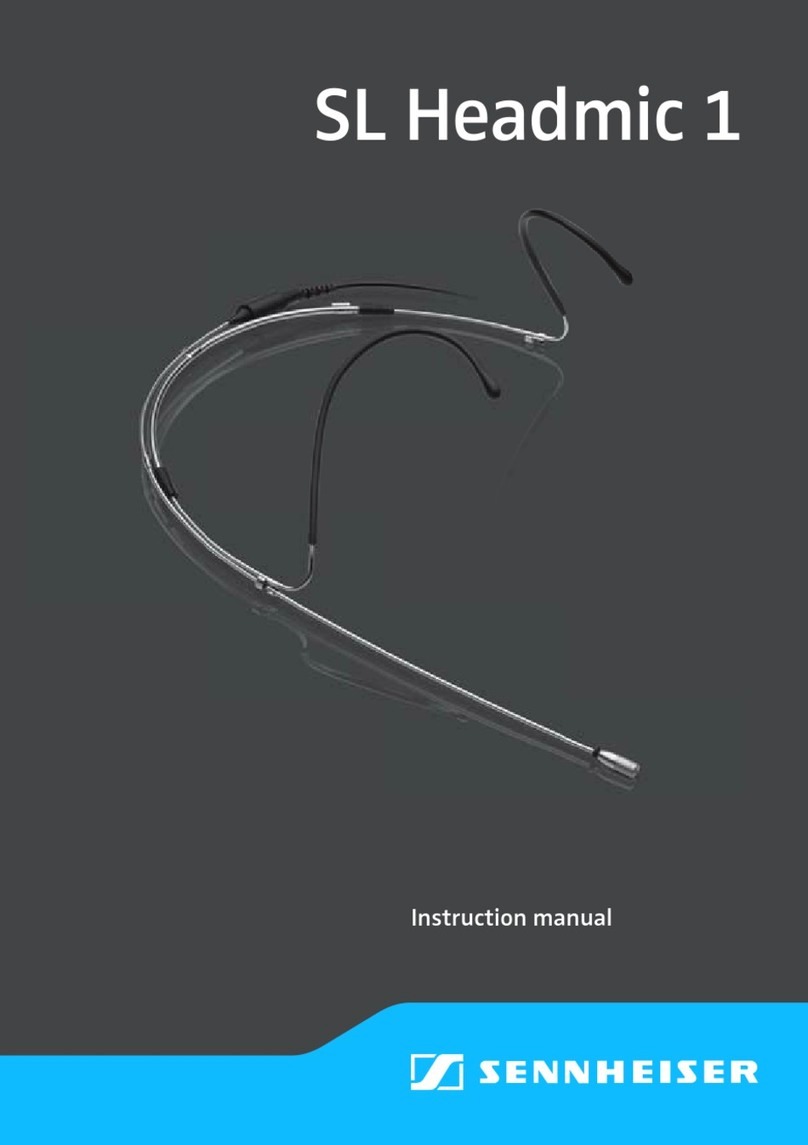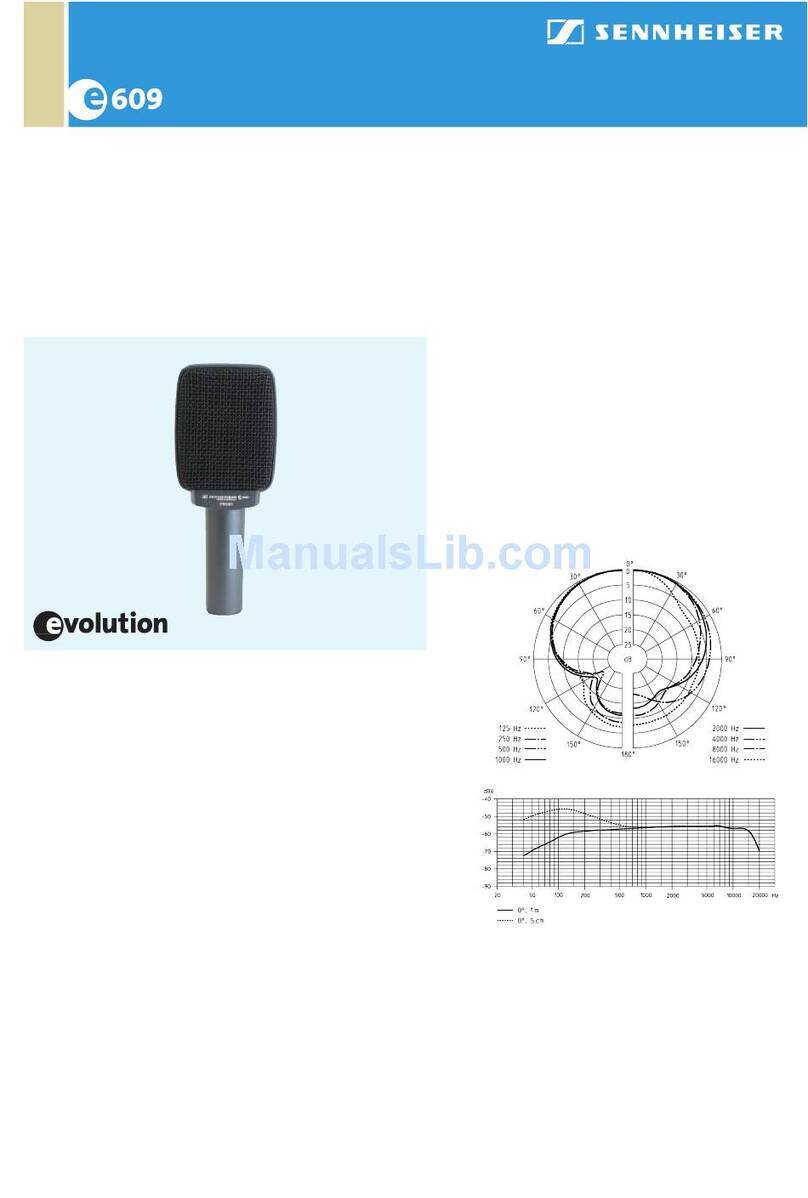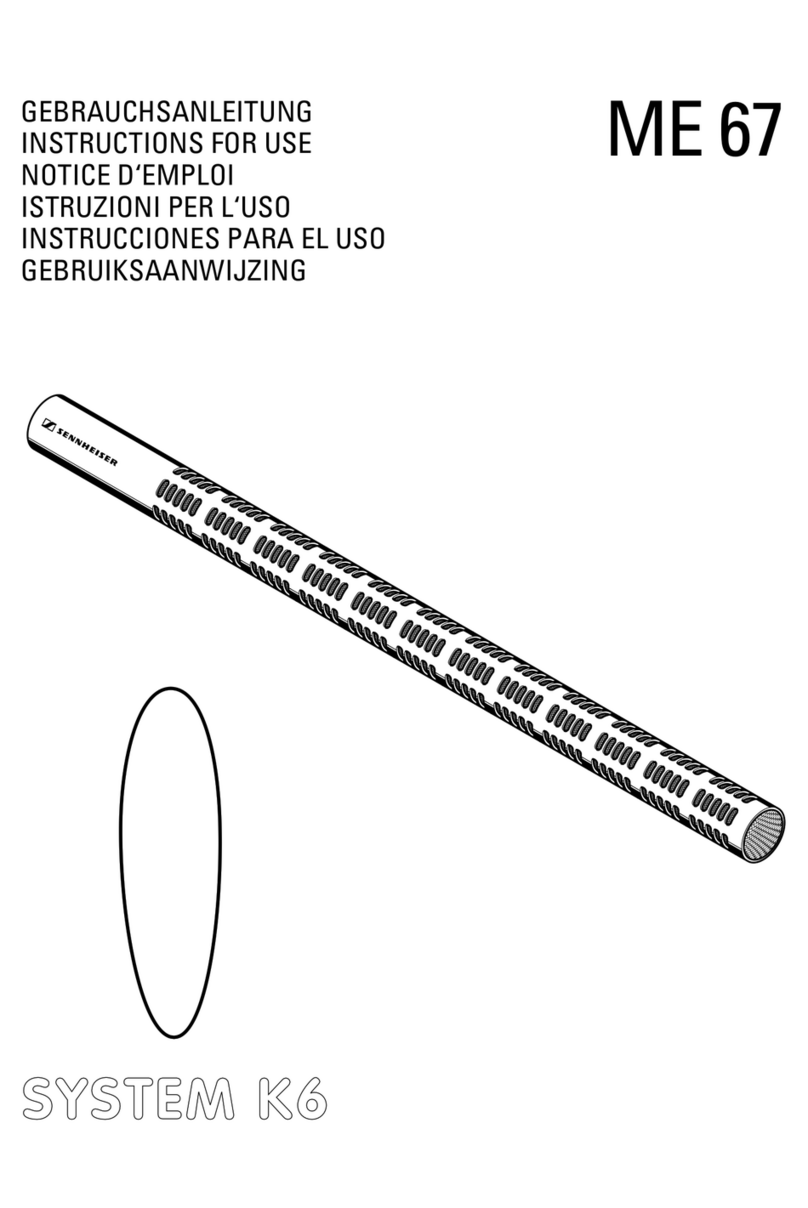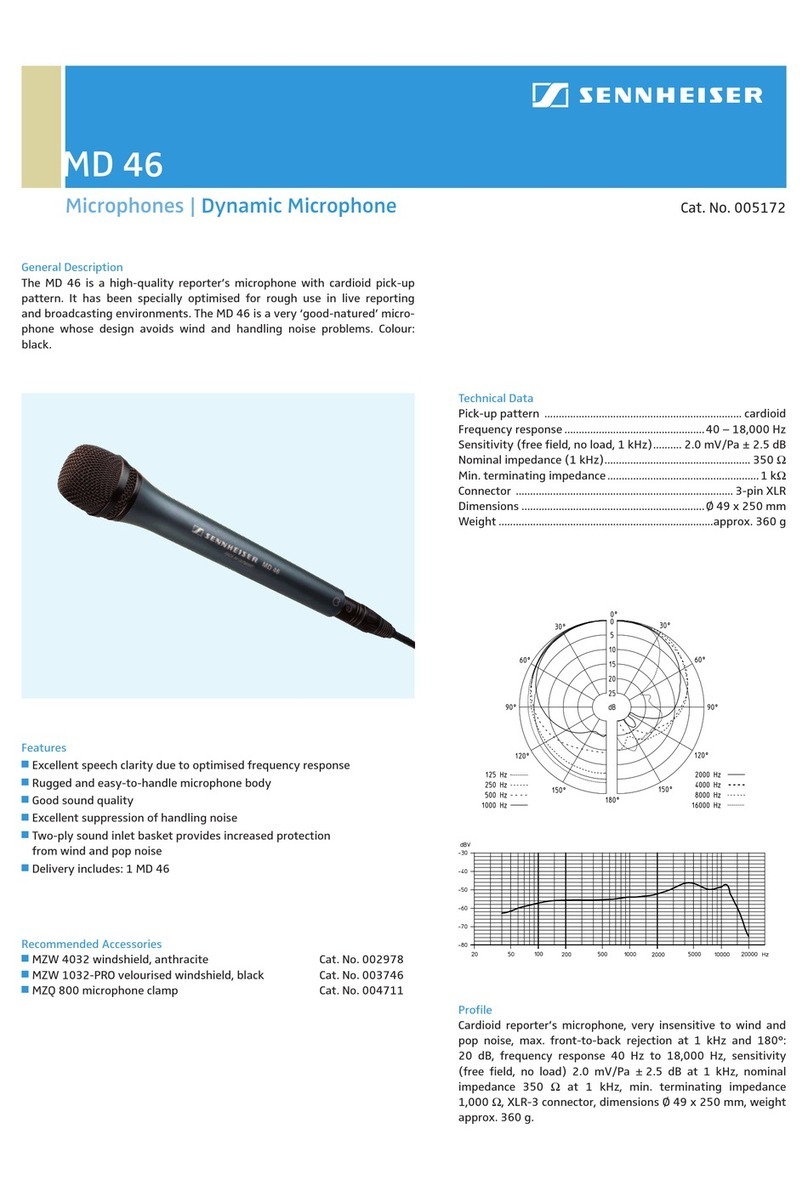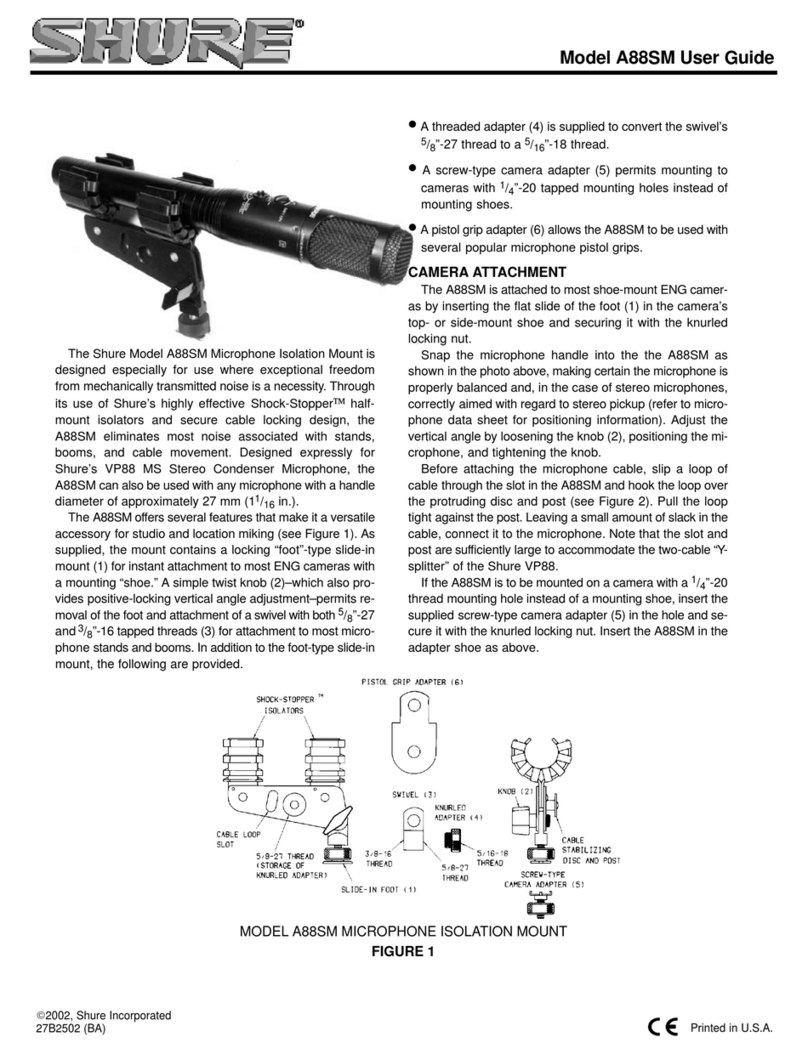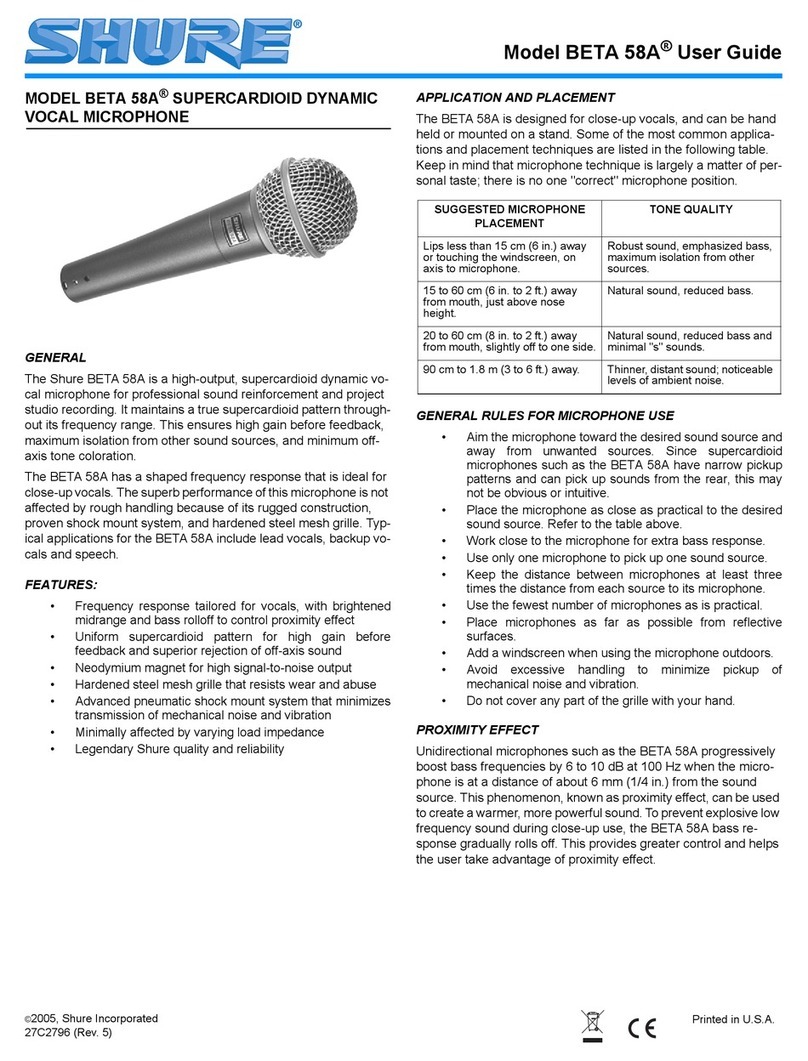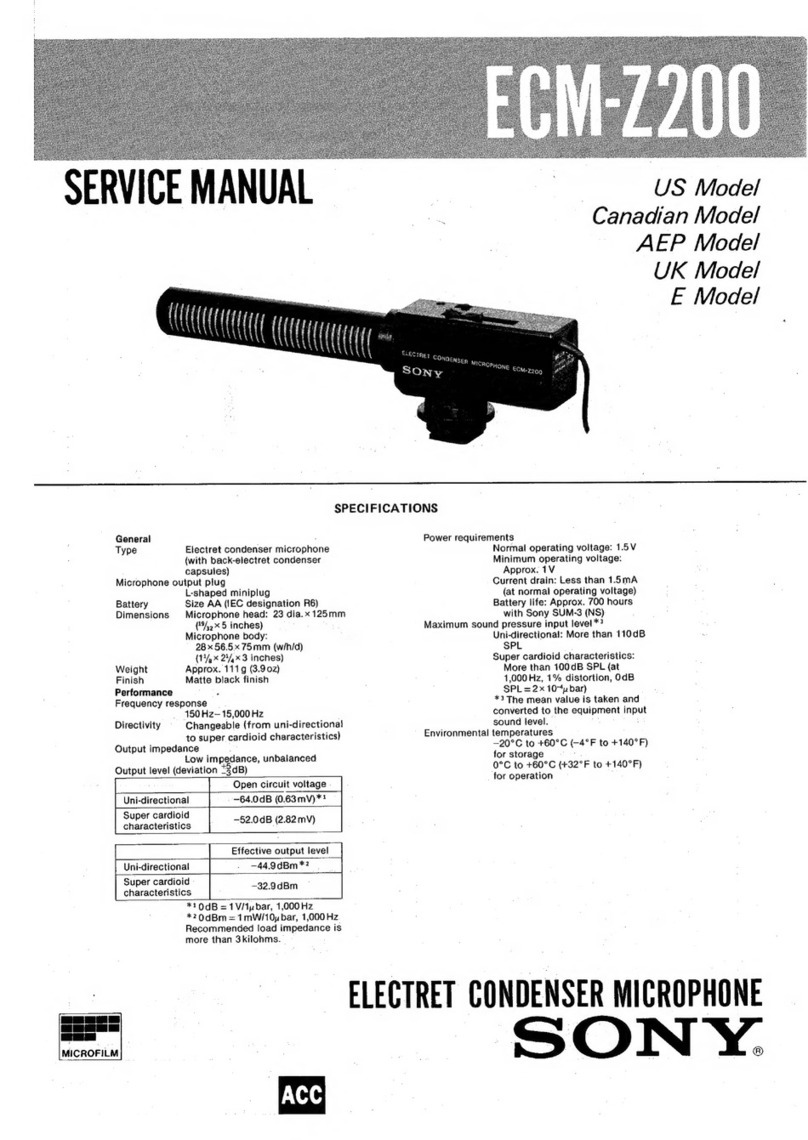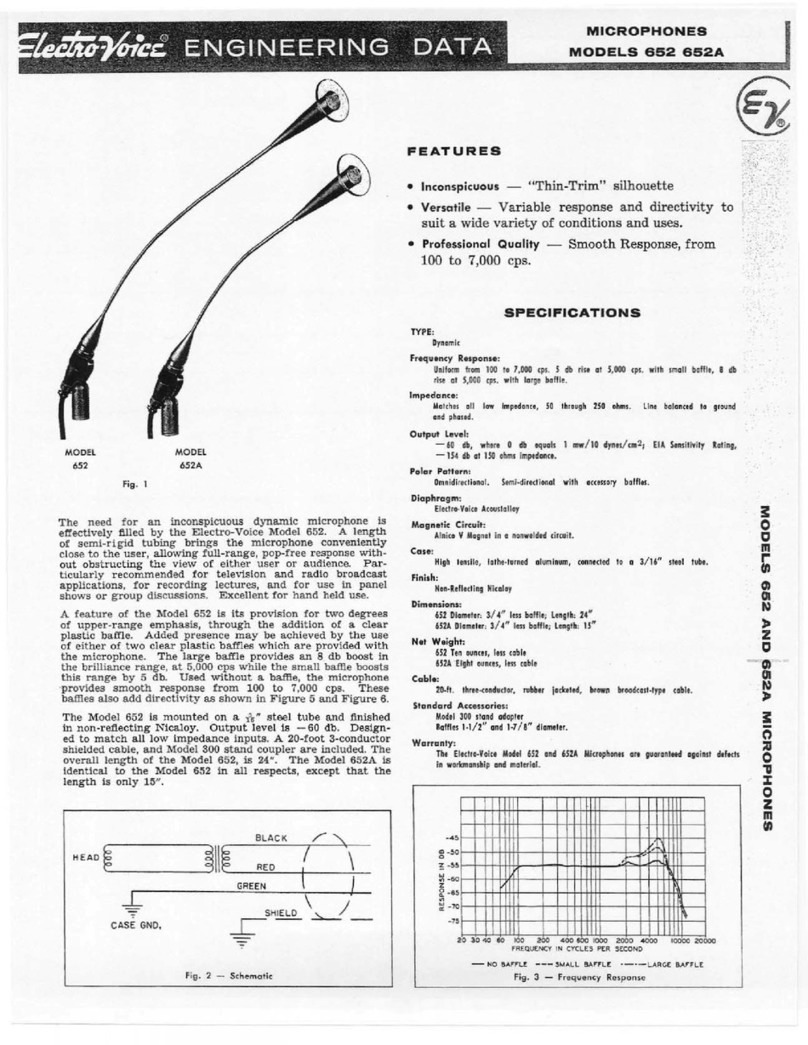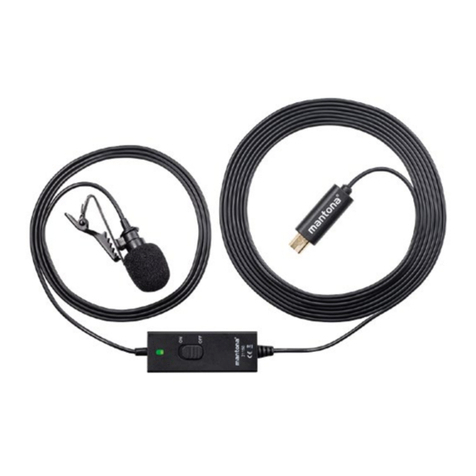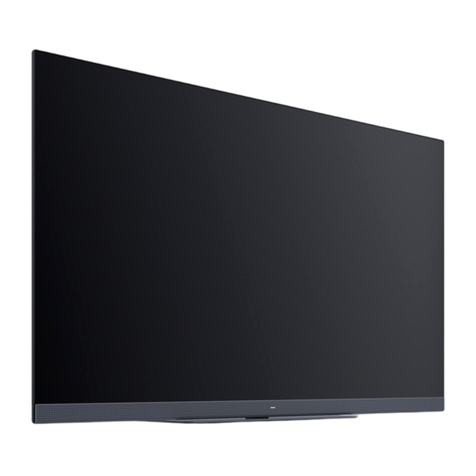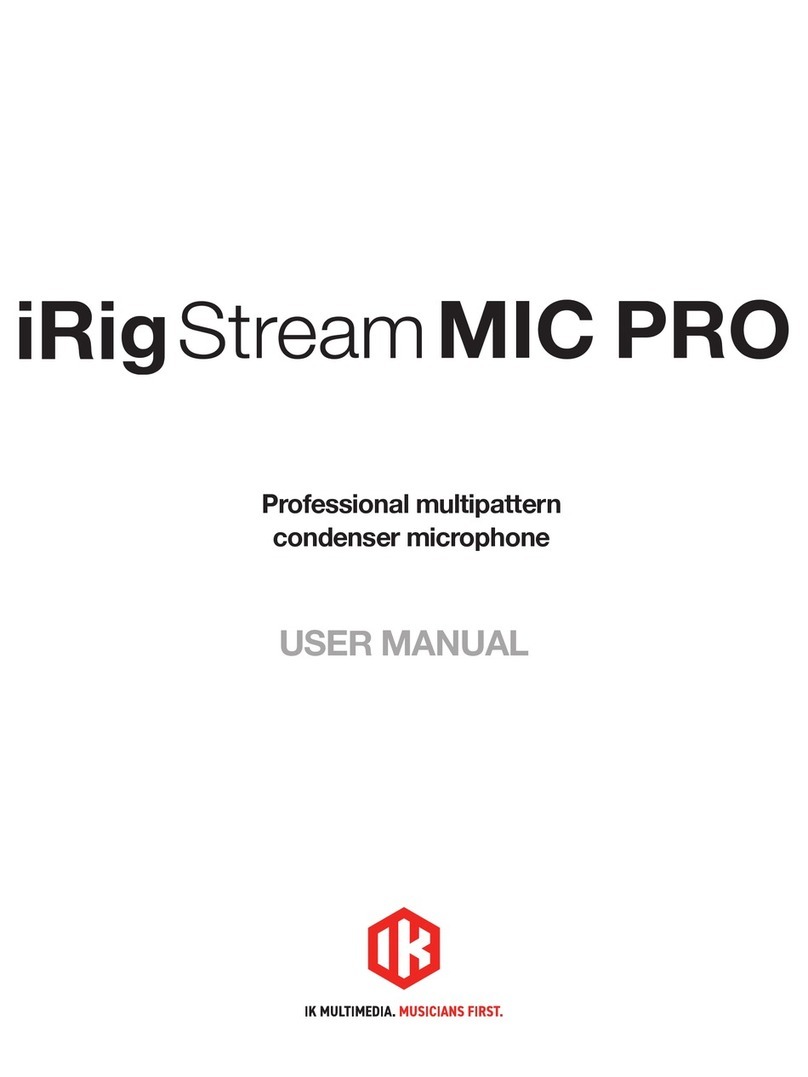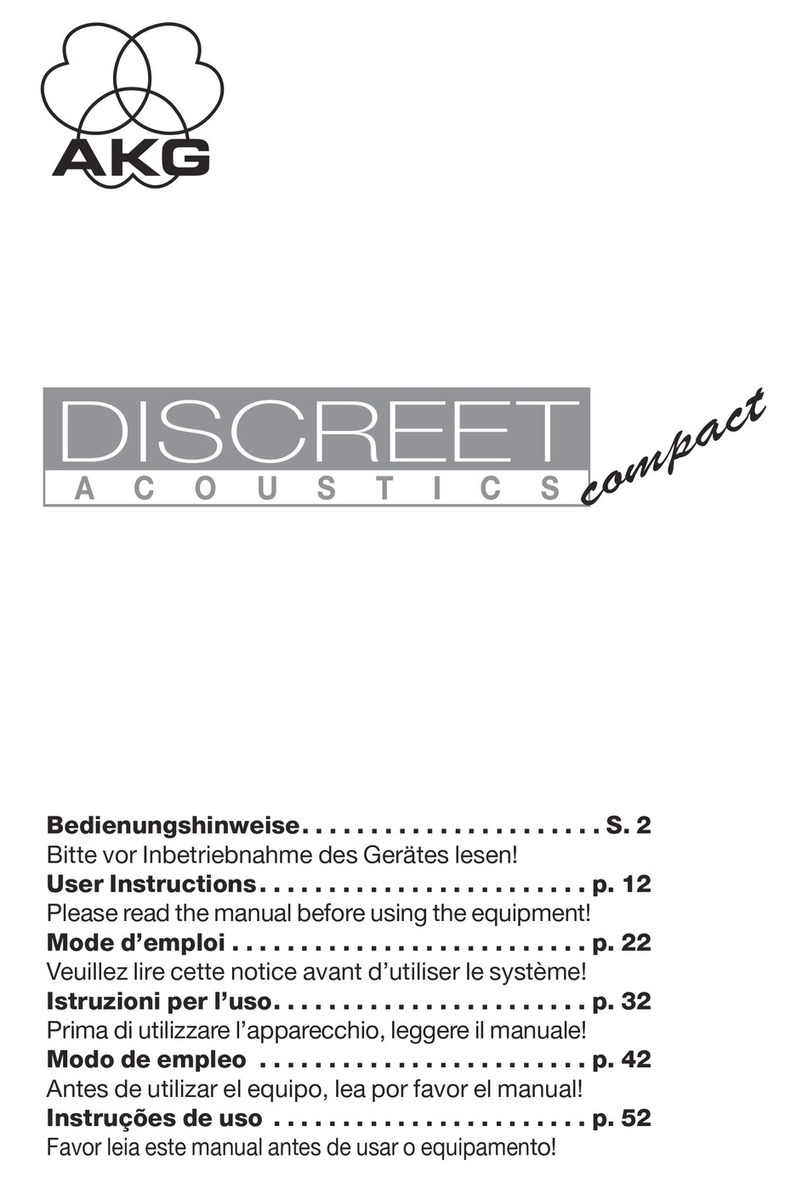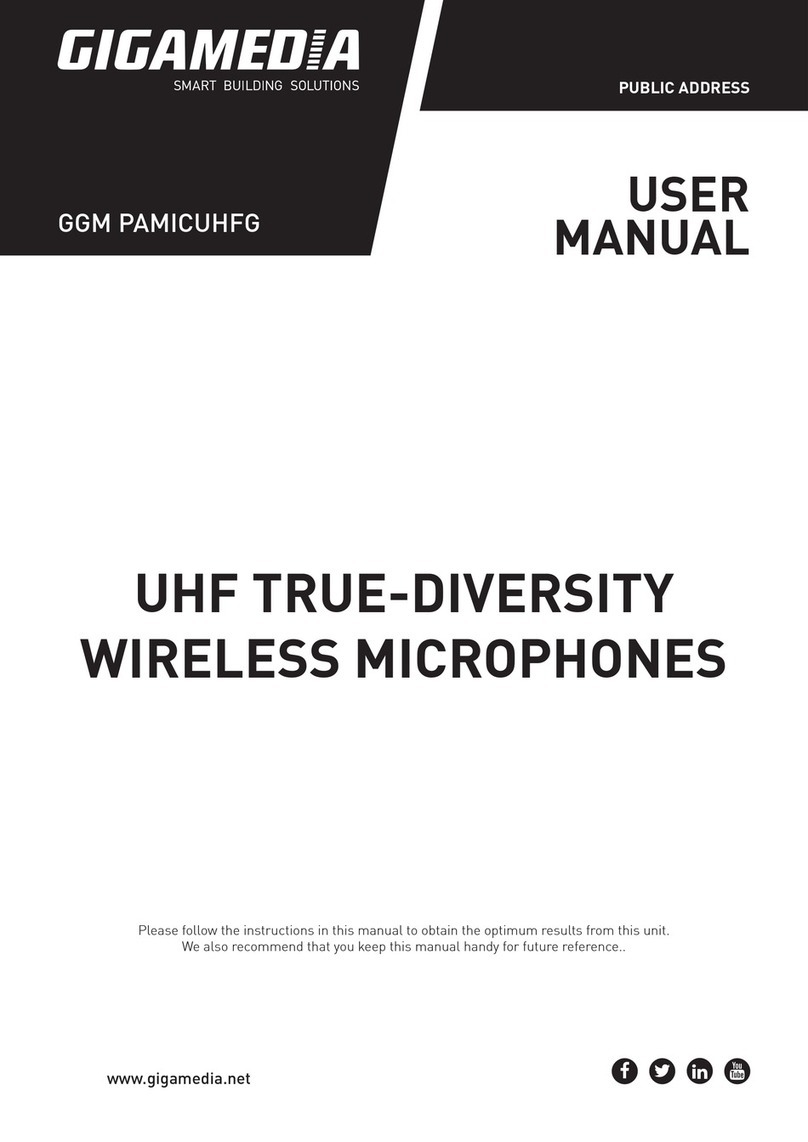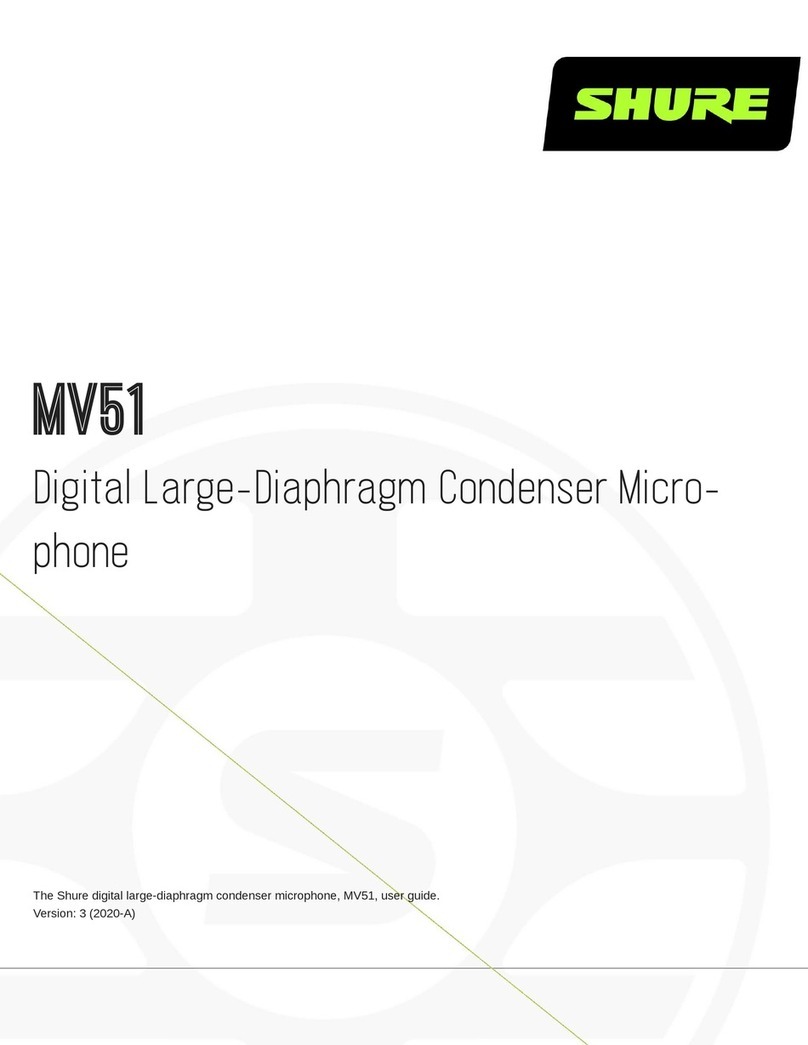Tips for the use of the acoustical boundary microphone
Themicrophone should, if possible,bepositionedormountedonanacoustically
live backing surface such as floor, wall or ceiling. Alternately, the MKE 212 can
be mounted at the centre of a large wooden board of sufficient size or, if this
is impossible for aesthetic reasons, on a transparent acrylic glass panel, which
then is mounted on a floor stand. It can also be suspended from the ceiling. The
board should be large, as its dimensions determine the point of the microphon’s
6 dB accentuation. In the free field, that is without any additional surface, the
MKE 212 has a lower frequency roll-off point of 1 kHz. To attain a lower cut-
off frequency, e.g. 500 Hz, a board of 350 mm x 350 mm would be necessaray.
When positioned on the floor, the microphone capsule should in any case be
protected by mounting the non-crush windscreen, which ist supplied as
standard accessory. This windscreen does not have any influence on the
acoustical characteristics of the microphone.
Due to is omnidirectional characteristics, the acoustical boundary microphone
is of limited suitability for recordings in surroundings with a high level of
background noise. Its prefered application is in recording studios and other
similarly damped but good acoustical evironments.
I you want to achieve most natural recordings, place the acoustical boundary
microphone at the position in front of the instrument or the orchestra, where
you have the best aural reception.
If two acustical boundary microphones are used as a pair of microphones for
stereo recording, the minimum distance between the two microphones should,
regardless of the width of the acoustic source, be kept at approx. 1 m to obtain
a defined left-rigth perception.
The advantages of this microphone become most obvious in recordings of
acoustic (classical) instruments.
Please make sure that neither microphone or windscreen are covered with
paper, fabric, etc. as this would affect the acoustical performance of the
microphone.
The suggestions given here are confined to be basic application of the MKE 212.
We have consciously not given any finished guidelines, because from our point of
view they would not be very helpful, bearing in mind that every user has his own
ideas about the sound of an instrument an orchestra or a vocal group, not to
mention the ever differing acoustical conditions. The MKE 212 offers a multitude
of application option, which can only be revealed by practical work and
experimentation with the microphone.
